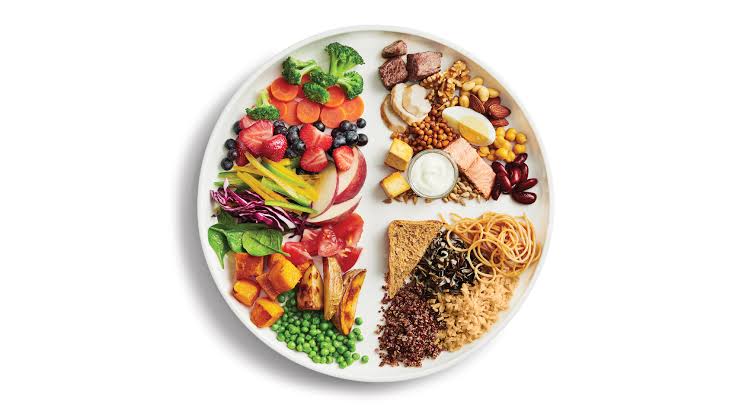Canada’s new Food Guide is a big change in how the country looks at nutrition and health. Created by Health Canada, it replaces the old food group system with a flexible and inclusive model based on evidence. The guide focuses on mindful eating and sustainability. It highlights not only what Canadians eat but also how and why they eat, offering more than just nutrition advice—it promotes a healthy lifestyle. With changing eating habits and rising health issues linked to poor diets, this updated guide helps people and communities rethink their approach to food.
Background: The Evolution from the Traditional Food Guide
Historically, Canada’s Food Guide has been based on a four-group model: vegetables and fruits, grain products, milk and alternatives, and meat and alternatives. While functional in its time, this classification has drawn criticism for being outdated and too heavily influenced by industry lobbying, especially from the dairy and meat sectors. The older guides often placed undue emphasis on serving sizes, leading many people to eat more than necessary or to prioritize certain food groups simply because they were prescribed. In response to these concerns and in line with global nutritional science trends, the government undertook a comprehensive review to deliver a more relevant and balanced guide.
The Plate Model: Visual Simplicity Meets Nutritional Wisdom
At the heart of Canada’s new Food Guide is the “plate model” — a simple visual representation that shows what a healthy plate should look like. Instead of specifying serving sizes and portions, the guide now focuses on proportions. Half the plate should be filled with vegetables and fruits, one-quarter with whole grains, and the remaining quarter with protein-rich foods. This model is not only easier to understand but also easier to apply in real-life meal planning. It visually communicates the importance of balance, color, and variety without overwhelming users with strict measurements or mathematical complexity.
This approach encourages people to focus on nutritional quality over quantity. It also allows flexibility for various cultural, regional, and personal food preferences. Whether someone prefers lentils over chicken or quinoa over brown rice, the guide makes room for those choices while still aligning with healthy dietary patterns.
A Shift Toward Plant-Based Proteins
One of the most significant and progressive aspects of the new food guide is its promotion of plant-based protein sources. While animal-based proteins like poultry, fish, and dairy are still included, the guide now encourages Canadians to choose beans, legumes, nuts, tofu, and lentils more often. This recommendation is rooted in extensive research showing that diets higher in plant-based proteins tend to lower risks of heart disease, obesity, and type 2 diabetes.
The move has stirred both praise and controversy. Health experts applaud it as a science-driven decision that aligns with global trends toward healthier eating. On the other hand, some stakeholders in the meat and dairy industries have expressed concern that their products are being downplayed. Nevertheless, the guide does not exclude these foods but simply encourages a more varied and balanced approach to protein consumption.
Eliminating the Dairy and Meat Categories: A Political and Cultural Statement
Perhaps one of the most controversial changes in the guide is the removal of the traditional “milk and alternatives” and “meat and alternatives” categories. This elimination is not merely cosmetic—it reflects a fundamental philosophical change. By integrating these categories under broader labels such as “protein foods,” the guide challenges long-standing assumptions that milk and meat must be staple parts of every meal.
This change also opens the door for greater inclusivity. Many Canadians are lactose-intolerant, vegan, vegetarian, or come from cultural backgrounds where dairy and meat are not central to the diet. The new guide respects these diverse dietary practices and offers guidance that is relevant across the cultural and socio-economic spectrum. It also avoids the implication that government nutrition policy should cater to powerful food lobbies rather than evidence-based health research.
Focus on Drinking Water and Reducing Sugar Intake
The new guide takes a firm stand on sugary beverages, recommending that Canadians choose water as their drink of choice. It emphasizes the need to reduce consumption of soft drinks, sweetened juices, energy drinks, and other high-calorie, low-nutrient options. This shift is not surprising given Canada’s rising rates of childhood obesity, type 2 diabetes, and tooth decay, all of which are linked to excessive sugar consumption.
The guide also subtly discourages high-fat dairy products and processed meat, known contributors to cardiovascular disease and certain cancers. While it stops short of banning these items outright, it clearly signals a move toward moderation and health-conscious decision-making.
Cultural Relevance and Food Accessibility
Another major strength of the new guide is its consideration of cultural relevance and accessibility. Recognizing Canada’s rich multicultural fabric, the guide offers flexible advice that can be adapted to different culinary traditions. It emphasizes whole, minimally processed foods rather than prescribing specific ingredients, allowing for a variety of spices, grains, cooking methods, and religious dietary practices to fit within the overall framework.
Additionally, the guide is sensitive to food insecurity—a pressing issue for many Canadians. While it promotes fresh produce and whole foods, it also acknowledges that canned, frozen, and shelf-stable alternatives can be equally nutritious and often more accessible for low-income households or people in remote communities.
Mindful Eating and Social Connection
Perhaps the most humanizing aspect of the new guide is its inclusion of non-nutritional advice. It urges Canadians to be mindful of their eating habits, cook more at home, enjoy meals with others, and listen to their hunger and fullness cues. These behavioral elements recognize that food is not merely fuel; it is a cultural, emotional, and social experience. Eating slowly, savoring flavors, and sharing meals can enhance digestion, reduce overeating, and promote stronger community bonds.
By moving beyond nutrients and calories, the guide touches on the psychological and social dimensions of eating, helping Canadians develop a healthier, more balanced relationship with food.
Environmental Sustainability: A Long-Term Vision
The new guide also aligns with environmental sustainability goals. By promoting plant-based diets, reducing reliance on red meat, and minimizing processed foods, the guide supports lower greenhouse gas emissions and more responsible land and water use. Though environmental language is not front and center, the implications of its recommendations speak to Canada’s broader climate commitments and its role in global ecological stewardship.
Conclusion: A Modern Framework for a Healthier Nation
Canada’s new Food Guide is not merely a list of what to eat—it’s a transformative blueprint for how to live better. By focusing on proportions instead of portions, promoting plant-based eating, emphasizing water, and addressing the psychological and cultural aspects of food, the guide takes a holistic and inclusive approach to nutrition. It departs from its predecessors by challenging food industry influence and embracing diversity, science, and sustainability.
This evolution reflects a broader understanding of health, one that encompasses body, mind, and environment. As Canadians continue to navigate complex food choices in an age of information overload and commercial influence, this guide serves as a trustworthy companion, offering clarity, flexibility, and compassion. It is a forward-thinking resource built not only to educate but also to empower every Canadian to eat well, live well, and thrive.



